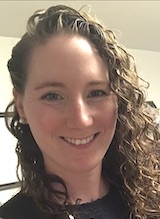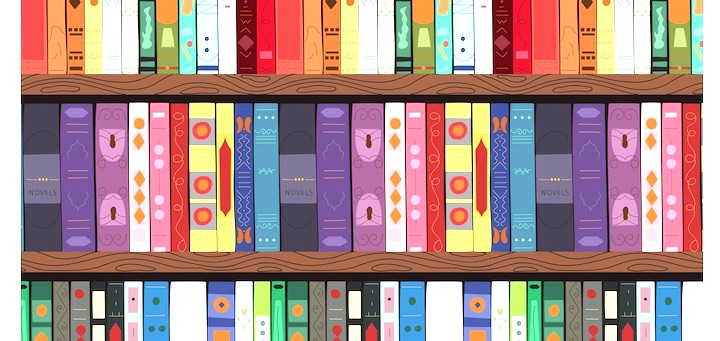Have Students Organize the Classroom Library
“I’d been researching the benefits of promoting student voice and choice – specifically by allowing them to assist in organizing an in-class library. Now I wanted to give it a try.”
When I returned to school this year my middle grades classroom was in disarray. Our Covid-19 mitigation efforts displaced furniture, bookshelves, and desks – they were all over the place, leaving my classroom library scattered around the room.
This year books were no longer quarantined, and my students and I would be able to use the classroom library again, but the space needed a serious facelift.
I soon realized I was going to need some help and decided to recruit my students – all five classes of them. I’d been researching the benefits of promoting student voice and choice – specifically by allowing them to assist in organizing an in-class library. Now I wanted to give it a try.
Based on my research (see my references at the end), I knew the work could potentially be chaotic with 20-plus middle school students in each of five periods. We did have some chaotic moments but approached them as problems to be solved together.
Drawing on our collective experience, I’m able to share a protocol for organizing the classroom library that you might find useful as you evaluate your own space.
Two full days – across five periods
To prepare for this work, I dedicated two days of class time to reestablish our shared library. We began by pulling all of the books off the shelves and placing them onto tables in my room.
As I launched the process in each class, we discussed what students already knew about genre and what genres they would like to see featured in the classroom library. I knew from my research that I wanted the classroom library to be organized by interests with the goal of activating my students’ motivation and engagement in voluntary reading.
Each class added genres to our list so that every group was able to contribute to the space’s organization. Our initial list included generic genres, such as realistic fiction, historical fiction, and fantasy. We then discussed how to recognize a book’s genre and learned how to preview books by looking at the cover, blurb and first couple pages.
From here, I set up stations around the room for all the different genres identified by the students. Students were expected to preview books and then begin sorting them into piles by genre. As students began to sort, they soon realized our initial list of genres would not suffice, and we subsequently added a romance, horror, and sports section to the library.
First we sorted, then we culled
Sorting the books took a while, and it was a bit chaotic ensuring students were putting books into a section where they belonged, but in the end we had some interesting conversations about what made a book one genre or another.
But once all the books were sorted, students began checking for damaged or old books to retire from the classroom library. When I first began this process, I thought sorting the books by genre would be the most difficult task to accomplish, but it was actually harder to see some of my past students’ favorite books being removed.
I defined “damaged” as a book with the binding falling apart or with a cover so taped together during my years of trying to preserve it that it was time to go. As students were sorting through the titles for damaged books, they were pulling out titles that had been some of the most popular books over the years; I wasn’t ready to let them go.
After consulting with my school librarian, I realized that I could recycle these worn but well-loved titles to make room for more books – and replace the ones that had been the most popular with shiny new copies. This softened the blow a little bit.
Students also found and removed books that were older editions with torn or yellowed pages. Other older books were in better shape but had outdated cover art. As students looked through these they urged me to replace them with updated covers and editions.
I realized that even if I kept these books, they’d likely collect dust on the shelves. Reluctantly, I helped students sort out books that could be considered older editions. After consulting with my school librarian once again, I found out there was a local book sale in town where I could donate the books.
Labeling, shelving and organizing
Our final step in revitalizing the classroom library was to make sure books were labeled properly with my name and color coded with washi tape to indicate the genre. Students ensured my name was present on the first page or outer spine and then placed colored tape at the bottom of the spine.
While students were working, I created larger labels for the shelves that indicated the genre’s colors. These shelf labels were suggested by the students to make it easier to navigate in our library space and sort books into their proper sections when they’re returned.
At the end of the second day with five classes working every period, we were able to organize the entire classroom library by color-coded genre. During this time, students also created bins of books they discovered while sorting that they planned to recommend to their peers. They realized that many of the books I already had were highly shareable – and now every class period has a special bin of books carrying their recommendation.
Some of my lessons learned
Organizing the classroom library with my students was hard work and took two full days of class. I’m not sure if I would do this every year, but the process was incredibly rewarding.
This year, more than in years’ past, I notice students are better able to navigate the classroom library. They know where books are located, and they don’t always need my help to browse the space. I also noticed that as the students were culling books and sorting them by genre, they were checking out books that had been sitting lonely on the shelves for a long time. Books that had been forgotten were given a new opportunity to be read!
Best of all, I learned about my students’ interests. I never would have created a romance, sports, or horror section in my classroom library, but these are topics that really grab the attention of the current crop of students.
I also realized that some of the sub-sections need more books. I thought my mystery and realistic fiction sections were robust, but our close inspection revealed that I need to supplement my current collection with not only replacement titles but new titles. I want to make sure every genre is well-represented and reflects their interests, so they can have lots of choices as they comb our well organized shelves for a good read.
The classroom library is now our space, instead of my space. I’m looking forward to continuing to highlight student voices in my classroom and helping them learn to care for the books in our shared space as much as I do.
References
Hopenwasser, C. B., & Noel, A. M. (2014). Tackling text complexity with your classroom library. Kappa Delta Pi Record, 50(2), 81–84.
Ivey, G. and Johnston, P. (2013). Engagement with young adult literature: Outcomes and processes. Reading Research Quarterly, 48(3), 255-275.
Jones, J. (2006). Student-involved classroom libraries. Reading Teacher, 59(6), 576-580.
Lapp, D., & Fisher, D. (2009). It’s all about the book: Motivating teens to read. Journal of Adolescent & Adult Literacy, 52(7), 556–561.
McDonough, J. (2021). It may be a mess, but it’s our mess: Creating a student organized classroom library. Choice Literacy.
Miller, D., & Sharp, C. (2018). Game changer! Book access for all kids. Scholastic.
Staake, J. (2020). 25 Must-Try Washi Tape Ideas for Teachers. We Are Teachers.
Troyer, M. (2017). A mixed-methods study of adolescents’ motivation to read. Teachers College Record, 119(5), 1–48.
Katie Durkin (@kmerz610) has been teaching English Language Arts to middle school students for a decade and currently teaches 7th grade Reading Workshop at public Middlebrook School in Wilton, Connecticut.
Katie is a zealous reader of middle grades and young adult books and enjoys sharing her love and passion for reading with her students. She is a doctoral student at Northeastern University studying the impact of classroom libraries on middle school students’ reading engagement. She is also the 2020 recipient of the Edwyna Wheadon Postgraduate Training Scholarship from the National Council of Teachers of English.

































